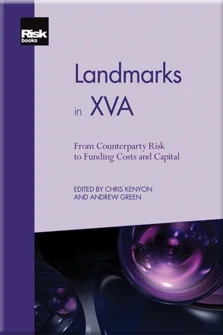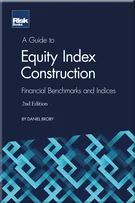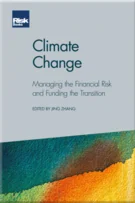Wrong-Way Risk the Right Way: Accounting for Joint Defaults in CVA
Introduction
Preface to Chapter 1
Being Two-Faced over Counterparty Credit Risk
Risky Funding: A Unified Framework for Counterparty and Liquidity Charges
DVA for Assets
Pricing CDSs’ Capital Relief
The FVA Debate
The FVA Debate: Reloaded
Regulatory Costs Break Risk Neutrality
Risk Neutrality Stays
Regulatory Costs Remain
Funding beyond Discounting: Collateral Agreements and Derivatives Pricing
Cooking with Collateral
Options for Collateral Options
Partial Differential Equation Representations of Derivatives with Bilateral Counterparty Risk and Funding Costs
In the Balance
Funding Strategies, Funding Costs
The Funding Invariance Principle
Regulatory-Optimal Funding
Close-Out Convention Tensions
Funding, Collateral and Hedging: Arbitrage-Free Pricing with Credit, Collateral and Funding Costs
Bilateral Counterparty Risk with Application to Credit Default Swaps
KVA: Capital Valuation Adjustment by Replication
From FVA to KVA: Including Cost of Capital in Derivatives Pricing
Warehousing Credit Risk: Pricing, Capital and Tax
MVA by Replication and Regression
Smoking Adjoints: Fast Evaluation of Monte Carlo Greeks
Adjoint Greeks Made Easy
Bounding Wrong-Way Risk in Measuring Counterparty Risk
Wrong-Way Risk the Right Way: Accounting for Joint Defaults in CVA
Backward Induction for Future Values
A Non-Linear PDE for XVA by Forward Monte Carlo
Efficient XVA Management: Pricing, Hedging and Allocation
Accounting for KVA under IFRS 13
FVA Accounting, Risk Management and Collateral Trading
Derivatives Funding, Netting and Accounting
Managing XVA in the Ring-Fenced Bank
XVA: A Banking Supervisory Perspective
An Annotated Bibliography of XVA
Most losses during the financial crisis that hit in 2007 resulted not from outright defaults, but from credit market volatility, ie, mark-to-market changes in the creditworthiness of counterparties. Little wonder, then, that one of the lessons of the crisis was that counterparty risk needs to be properly reflected in the valuation of derivatives portfolios. This is exactly the motivation behind an extra capital charge introduced in Basel III, the so-called credit valuation adjustment (CVA). The general idea is that the CVA risk, arising from changes in counterparties’ credit spreads, should be identified and included in the calculation of regulatory capital. This raises a natural question about methods for accurate calculation of CVA.
In this chapter we first outline the general framework for computing the CVA and focus in particular on the tacit assumption of many CVA models that the counterparties’ default times are independent of all economic factors driving the value of a derivatives portfolio. Although this assumption simplifies calculations, it also makes CVA models incapable of handling many practically relevant situations in which default risk increases with the position
Copyright Infopro Digital Limited. All rights reserved.
As outlined in our terms and conditions, https://www.infopro-digital.com/terms-and-conditions/subscriptions/ (point 2.4), printing is limited to a single copy.
If you would like to purchase additional rights please email info@risk.net
Copyright Infopro Digital Limited. All rights reserved.
You may share this content using our article tools. As outlined in our terms and conditions, https://www.infopro-digital.com/terms-and-conditions/subscriptions/ (clause 2.4), an Authorised User may only make one copy of the materials for their own personal use. You must also comply with the restrictions in clause 2.5.
If you would like to purchase additional rights please email info@risk.net









